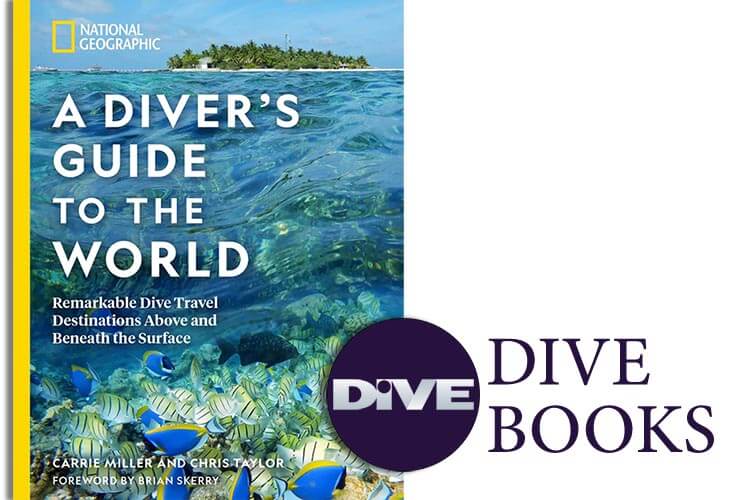
In A Diver’s Guide to the World, Carrie Miller and Chris Taylor explore 50 of the world’s top dive spots that have a focus on sustainability.
Following on from her excellent and similarly weighty 2019 tome 100 Dives of a Lifetime, National Geographic writer Carrie Miller and her photographer husband, Chris Taylor, spent 14 months in 35 countries exploring 50 of the world’s best dive spots for A Diver’s guide to the World, with a particular focus on those with significant commitments to environmental sustainability.
A Diver’s guide to the World is introduced as a book ‘for divers who love to travel’, rather than divers who just love to spend time underwater, and Miller provides a thoroughly informative brief for the typical diving visit – if not all the top dive sites – plus surface activities and handy tips on how to help local sustainability initiatives.
The choice of locations is broad and varied and not limited to the tropics, ranging from popular must-do-dive spots such as Raja Ampat, Malapascua, Curaçao and Tulum to more eclectic and globally less well-known destinations such as Kenting National Park (Taiwan), Bormes-Les-Mimosas in France, and Alonnisos in Greece.
Miller freely admits that the couple did not set out to explore all the best dives available in any given area, so experienced divers will note a few fairly outstanding omissions here and there, but she by and large covers what the travelling diver can expect to find in any given location.
Each destination gets five pages with an introduction to the region, an overview of both underwater and topside activities, and a ‘need to know’ section for typical accommodations, food and drink and getting yourself around.
Almost all of the book’s 350 pages, bar the appendix, are accompanied by Taylor’s beautiful photography, both topside and underwater images highlighted by the art-quality paper on which the book is printed.
Interspersed among the guides are ways to make a difference by raising awareness of, diving with or donating to local conservation initiatives, plus tips on research to do before visiting and special adventures that some destinations may hold.
A couple of chapters at the end provide travel pointers for inexperienced divers, although I, as a former instructor, thoroughly disagree with the sentiment that ‘learning to dive in warm, clear water can be a huge advantage’!
Notable omissions from the book are the Red Sea and the Maldives, which have certainly had problems with responsible tourism in the past, however, both regions have seen significant investment in sustainability over the last decade, and – since it’s a diver’s guide to the World, not ‘most of the World’ – deserved a mention
Overall, however, A Diver’s Guide to the World is an expertly written travel book, both for new divers who still have the world (most of it) to explore, and a great source for experienced divers needing hints for their next bucket list destination.


